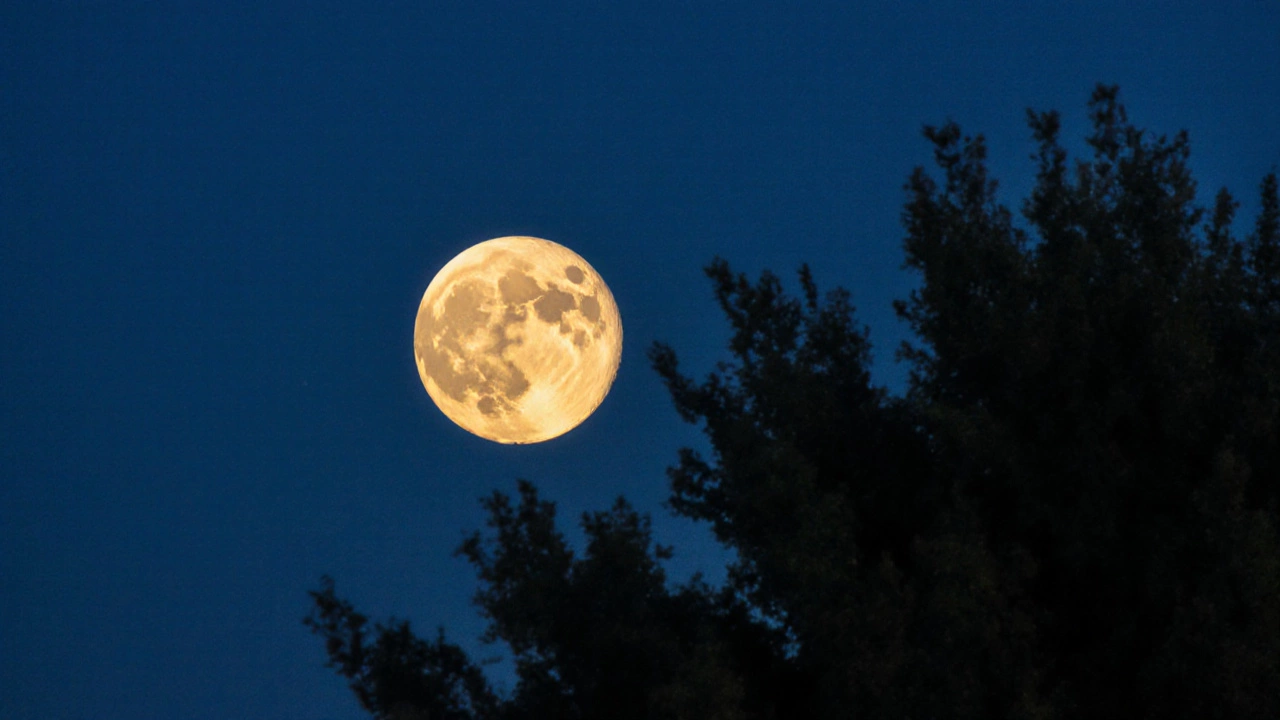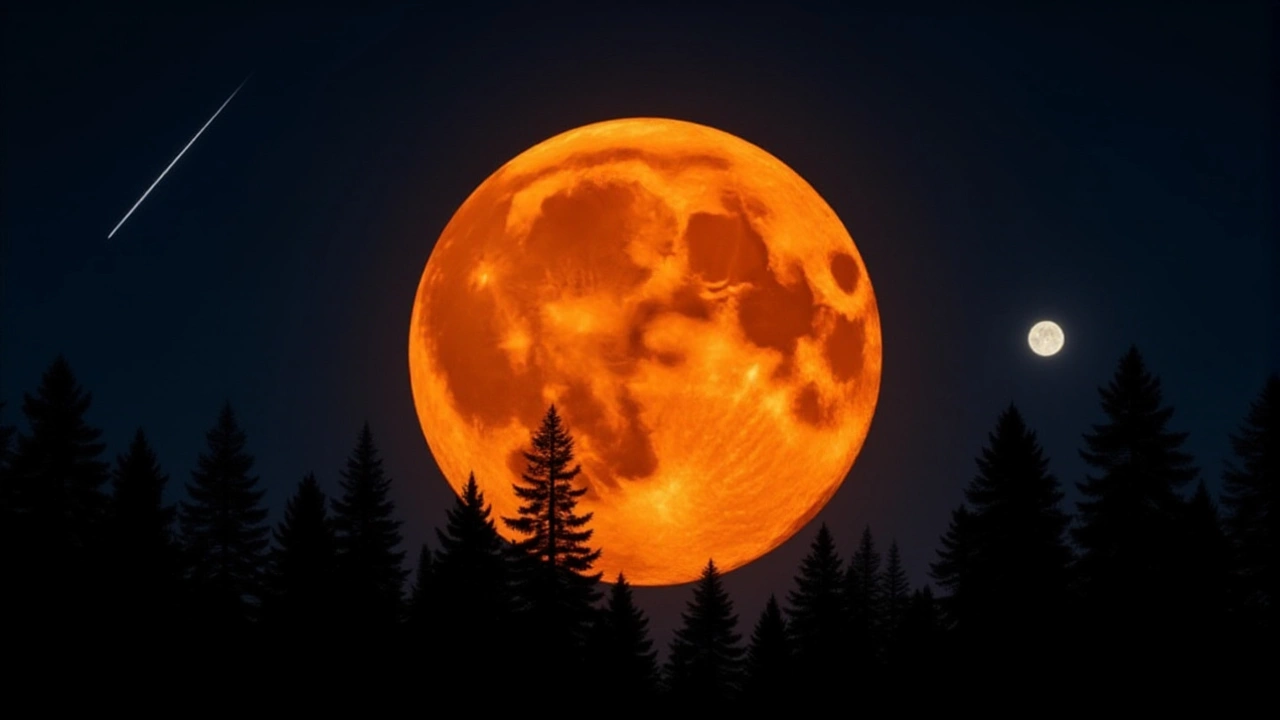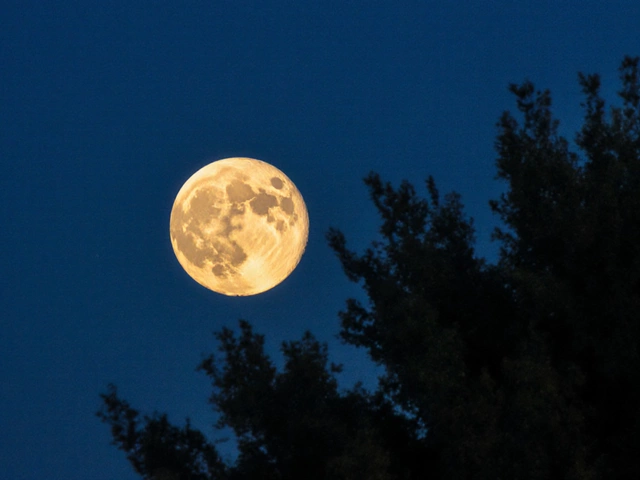Supermoon Spectacle: October 6, 2025 Harvest Moon Lights Up US and UK Skies

When the night sky flashes brighter than usual on Monday, October 6, 2025, you’ll know why – the first supermoon of the year is rising, and it’s doing double duty as the season’s Harvest Moon. NASA confirmed the peak illumination hit 11:47 PM EST, making the moon about 30 % brighter and up to 14 % larger than a typical full moon. For anyone in the United States or the United Kingdom, the event promises a brief window of celestial fireworks that many haven’t seen since 1987.
What Exactly Is a Supermoon?
In plain language, a supermoon occurs when the Moon swings to its closest approach to Earth – called perigee – during a full moon phase. Because the distance shrinks to roughly 356,500 km, the lunar disk looks larger and spits out more reflected sunlight. Astronomers estimate the visual boost at about 10‑15 % in apparent diameter and up to a third more brightness. The term was coined in 1979, but the phenomenon itself has been observed for millennia, often woven into folklore.
“When the Moon is this close, the Earth’s gravitational pull is strongest, which can even affect tides a bit,” explains Dr. Thomas Zurbuchen, senior astrophysicist at NASA. “For sky‑watchers, it’s simply a brighter, bigger night‑light that’s impossible to miss.”
The October 2025 Harvest Supermoon Details
This year’s supermoon also doubles as the Harvest Moon – the full moon that rises nearest to sunset around the autumnal equinox on September 22, 2025. Because it peaks just after the equinox, it offers extended illumination for harvest‑time activities, a tradition dating back to pre‑industrial farming societies.
In the United States, the moon will crest the eastern horizon at roughly 6:02 PM local time across the Central and Eastern zones, while West Coast observers will see it a bit later, around 7:15 PM Pacific. It remains high in the sky until after midnight, giving city‑dwellers and rural stargazers ample opportunity to catch the glow.
British sky‑watchers aren’t left out. According to the UK Met Office, southern and eastern counties can expect clear skies around 7:00 PM, the moment the moon rises over the English Channel. In contrast, Scotland and northern Wales may see lingering cloud cover, but conditions improve dramatically the following night when the moon peaks at 6:15 PM on October 7.
Double Delight: Draconid Meteor Shower
Adding to the spectacle, the supermoon aligns with the opening of the Draconid meteor shower, which peaks on the same Monday night. The Draconids are known for their soft, comet‑derived meteors that typically streak at speeds of 20 km/s – slower than many other showers, which makes them easier to spot with the naked eye.
NASA’s video brief titled “What’s Up: October 2025 Skywatching Tips from NASA” points out that observers should look toward the constellation Draco, just above the moon, to maximize their chances. While the shower usually yields 5‑10 meteors per hour, a clear, dark night could push that number higher, especially with the moon’s extra brightness lighting up the sky.
Cultural Roots and Historical Context
The name "Harvest Moon" comes from centuries‑old farming practices in the Northern Hemisphere. Before electric lights, laborers relied on the moon’s glow to extend working hours during the crucial period of gathering crops. The combination of a supermoon and a harvest moon is rare – the last time it happened in the modern record was in 1987, making the 2025 event a nostalgic nod to agrarian heritage.
Historically, supermoons have sparked myths ranging from werewolf transformations to prophetic omens. Modern science strips away the superstition but keeps the awe. Astronomers also note that the October supermoon sits in the zodiac sign of Aries, opposite the Sun in Libra, forming a classic full‑moon opposition that astrologers claim amplifies emotional intensity. While we steer clear of predictions, the celestial geometry does create a striking visual – the moon appears high and round, set against a crisp autumn sky.

Viewing Tips, Safety, and Weather Forecasts
Here’s the thing: you don’t need a telescope to enjoy this event, but a pair of binoculars can help you spot the Draconids and the subtle lunar surface details that shine brighter at perigee. Dress warmly – nights in October can drop to the low 40s °F (around 5 °C) across the Midwest.
- Find a dark spot. Light pollution can wash out both the moon’s color contrast and meteors.
- Check local forecasts. The UK Met Office predicts scattered clouds in eastern England, while the National Weather Service (NWS) expects mostly clear skies for the Midwest U.S.
- Bring a comfortable chair or blanket – you’ll likely stay out for an hour or more.
- Capture the moment safely. Use a tripod and set your camera’s exposure to 1/125 s at ISO 400 for a crisp lunar shot without overexposing the meteor trails.
If you can’t step outside, NASA suggests “moon‑viewing parties” via virtual livestreams, where the agency broadcasts live feeds from the Hubble Space Telescope and ground‑based observatories.
What’s Next? Upcoming Supermoons in 2025
The October event is just the first of three supermoons slated for 2025. The next two will occur on November 5 and December 5, each with its own astronomical quirks. The November supermoon will coincide with the Leonid meteor shower, while the December one will be the “cold supermoon,” appearing during the winter solstice.
For enthusiasts, the series offers a chance to compare the Moon’s apparent size and brightness across different seasons – a natural laboratory for both amateur astronomers and curious kids.
Why This Matters to Everyday Folks
Beyond the pretty pictures, the supermoon subtly influences Earth’s tides, nudging coastal waters a few centimeters higher than usual. In coastal communities, this can affect small‑boat docking schedules and, in rare cases, exacerbate flooding in low‑lying areas if combined with storm surges.
More importantly, the event gives a shared experience. Families gather on backyards, schools organize night‑sky lessons, and social media lights up with #Supermoon2025 photos. In a world busy with digital noise, a simple, luminous reminder of our place in the cosmos can be unexpectedly grounding.
Frequently Asked Questions
When is the best time to view the October 2025 supermoon in the United States?
The moon reaches its highest point around 10 PM local time across most of the continental U.S. For the clearest view, aim for the window between 8 PM and midnight, when it’s high enough to avoid horizon distortion and after sunset darkness sets in.
How does the supermoon affect the Draconid meteor shower?
The supermoon’s extra illumination helps you see fainter meteors, though the brightness can also wash out very dim streaks. Look toward the north‑east sky near the constellation Draco after the moon rises to catch the most meteors.
Will the supermoon have any noticeable impact on tides?
Yes, perigee moons generate slightly higher high tides – called “perigean springs.” Coastal areas may see tides a few centimeters higher than average, which can be relevant for small‑boat operators and low‑lying shorelines.
What are the weather conditions expected for viewers in the United Kingdom?
The UK Met Office predicts mostly clear skies for southern and eastern England around 7 PM on October 6, while northern regions may experience scattered clouds that should clear by the following evening.
How does this supermoon compare to previous ones, like the 1987 event?
Both events paired a supermoon with a Harvest Moon, but the 2025 occurrence benefits from modern live‑streaming and higher‑resolution photography, allowing a global audience to experience the spectacle in real time – something impossible in 1987.
